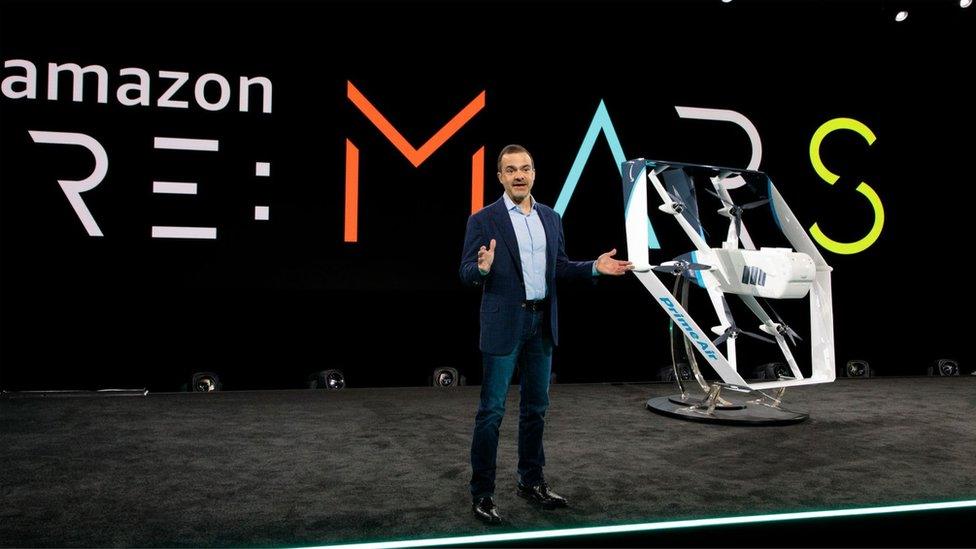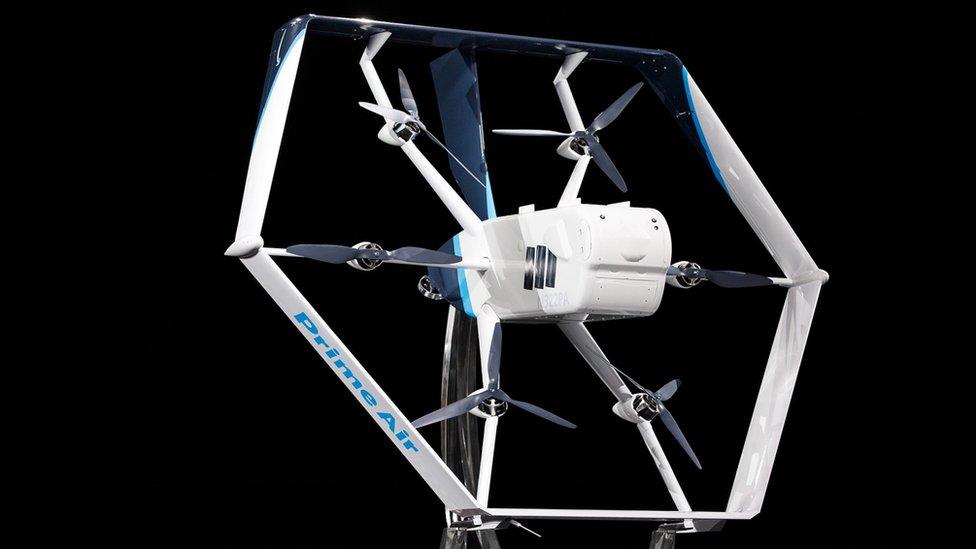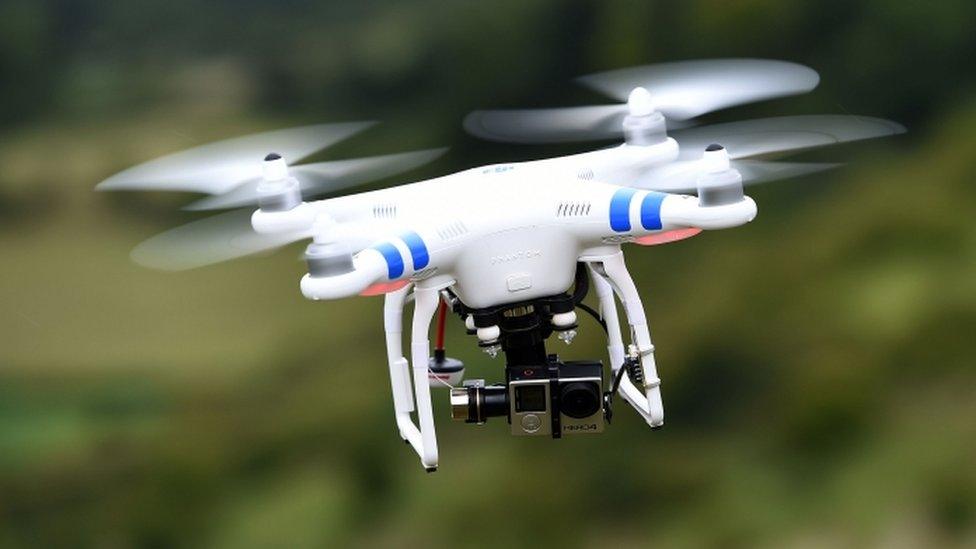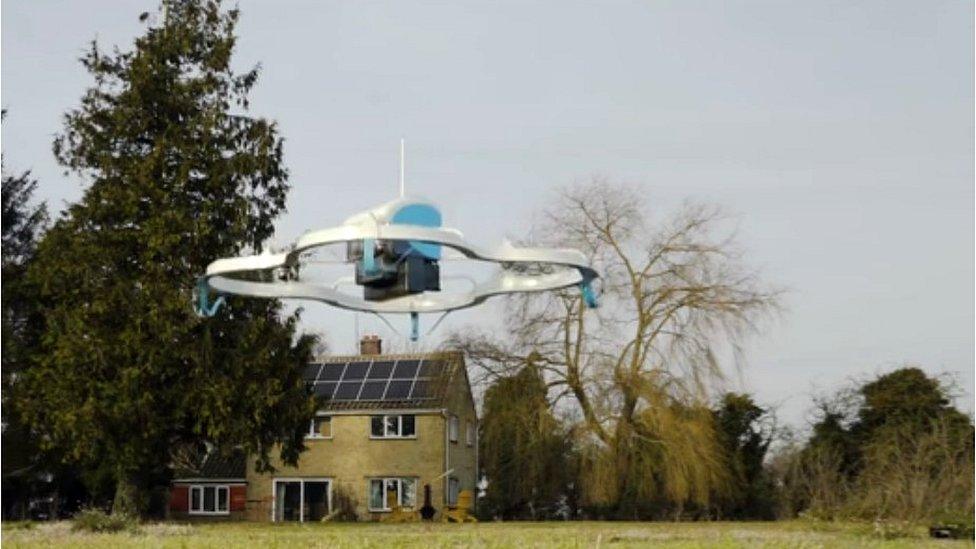Amazon to deliver by drone 'within months'
- Published
- comments

Amazon executive Jeff Wilke said the drone had been engineered to minimise noise
Amazon has said it will use drones to deliver packages to customers “within months”.
It unveiled its latest iteration at a conference in Las Vegas, touting the machine's ability to spot obstacles such as people, dogs, and clotheslines.
Amazon executive Jeff Wilke said the drone would be able to travel 15 miles to carry packages weighing 5lbs (2.3kg) or less.
Mr Wilke did not say where in the world the drone deliveries would initially take place, or precisely when.
However, the US Federal Aviation Administration told the BBC it had granted Amazon a permit to operate the drone in the US.
"The FAA issued a Special Airworthiness Certificate to Amazon Prime Air allowing the company to operate its MK27 unmanned aircraft for research and development and crew training in authorized flight areas," the regulator said.
"Amazon Prime Air plans to use the aircraft to establish a package delivery operation in the United States. This certificate is valid for one year and is eligible for renewal."

The prototype drone has "shrouds" to act as protection from its propellers, which double up as wings
In the past, Amazon has been accused of using the promise of drone delivery as a headline-grabber to push its publicity around its Prime membership service.
But in December 2016, the company ran an apparently successful trial in Cambridge, UK. A package was delivered, by drone, in 13 minutes.
'Situational awareness'
On stage during the firm’s “Re:Mars” conference - an event highlighting the firm's work in machine learning, robotics, automation and space - Amazon displayed the drone that will be used.
It uses six rotors, and “sees” what’s around it using a combination of data from visual, thermal and ultrasonic sensors.
Allow YouTube content?
This article contains content provided by Google YouTube. We ask for your permission before anything is loaded, as they may be using cookies and other technologies. You may want to read Google’s cookie policy, external and privacy policy, external before accepting. To view this content choose ‘accept and continue’.
The firm insisted that it had built a drone with multiple redundancies for avoiding objects, even if it lost its connectivity.
"Some drones are autonomous but not able to react to the unexpected, relying simply on communications systems for situational awareness,” Mr Wilke said, external.
"If our drone’s flight environment changes, or the drone‘s mission commands it to come into contact with an object that wasn’t there previously - it will refuse to do so - it is independently safe.”
The firm shared a video of a test flight, but its sound was covered by music. One aspect that might affect societal acceptance could be noise, said Carolina Milanesi, from Creative Strategies.
“I'm sure that it will be a concern, although it might not be that different from the noise from a delivery truck arriving at your home.
“The only difference is that the drone might be closer to a person's home if it's landing in the garden."
Mr Wilke said the drone’s design had "been optimized to minimize intrusive, high-frequency sounds”.
_______
Follow Dave Lee on Twitter @DaveLeeBBC, external
Do you have more information about this or any other technology story? You can reach Dave directly and securely through encrypted messaging app Signal on: +1 (628) 400-7370
- Published15 January 2019

- Published14 December 2016
